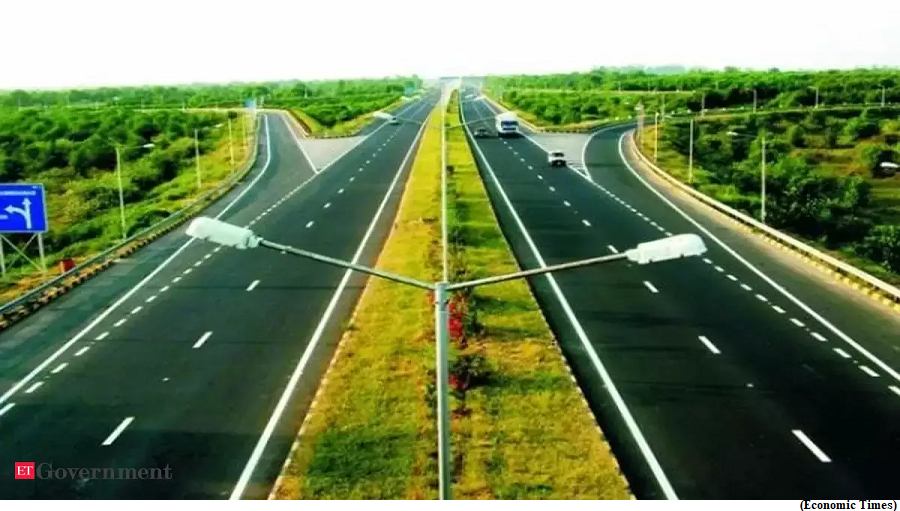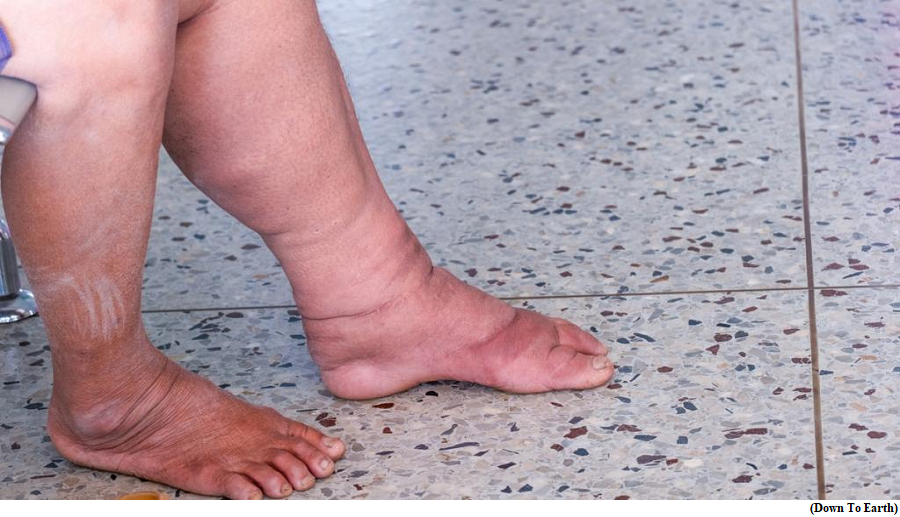Scientists are working on plans to build roads on the Moon (GS Paper 3, Science and Technology)

Why in news?
- The European Space Agency (ESA) has embarked on an ambitious project to create roadworthy surfaces on the Moon.
- The initiative, known as PAVER, aims to pave over areas of activity on the Moon, including roads and landing pads, by melting lunar dust into a glassy solid surface using a powerful laser.
Why it matters?
- The need for such an undertaking stems from the challenges posed by lunar dust, which is ultra-fine, abrasive, and clingy.
- During the Apollo era, this dust proved to be a significant hindrance, clogging equipment and eroding spacesuits.
- When the Apollo 17 lunar rover lost its rear fender, the vehicle became so coated in dust that it threatened to overheat.
- Similarly, the Soviet Union’s Lunokhod 2 rover perished due to overheating when its radiator got covered in dust.
PAVER project:
- The PAVER project, led by Germany’s BAM Institute of Materials Research and Testing, Aalen University, LIQUIFER Systems Group in Austria, and Germany’s Clausthal University of Technology, with support from the Institute of Materials Physics in Space of the German Aerospace Center, DLR, is a response to these challenges.
How it will work?
- They used a 12-kilowatt carbon dioxide laser to melt simulated moondust into a solid surface, creating a potential solution for constructing paved surfaces on the Moon.
- The process involves using a laser beam to produce triangular, hollow-centred geometric shapes approximately 20 cm across. These shapes can be interlocked to create solid surfaces across large areas of lunar soil, potentially serving as roads or landing pads.
- The resulting material is glasslike and brittle but can withstand downward compression forces. Even if it breaks, it can still be used and repaired as necessary.
- The team estimates that a 100 square meter landing pad with a thickness of two centimeters of dense material might be constructed in 115 days.
Way Forward:
- The initiative has been hailed as an effective investment, opening up multiple promising tracks for follow-up investigation.
- As astronauts prepare to return to the lunar surface, the creation of roadworthy surfaces could prove instrumental in making lunar exploration safer and more efficient.
NHAI Upgrades ATMS Standards for Enhanced Road Safety and Digital Enforcement
(GS Paper 3, Economy)
Why in news?
- Recently, the National Highways Authority of India, NHAI has released its updated policy to implement upgraded and forward-looking Advanced Traffic Management System (ATMS) Standards and Specifications 2023.
- Harnessing latest advancements in AI technology, the initiative will enhance road safety and digital enforcement on National Highways and Expressways.

VIDES:
- The enhancements include replacing previous VIDS cameras with the newly introduced Video Incident Detection and Enforcement System (VIDES) to emphasize the digital enforcement of traffic rules.
- VIDES has capability to identify 14 distinct incidents including
- triple riding,
- helmet and seatbelt violations,
- wrong lane or direction driving,
- presence of animals on the highway, and
- pedestrian crossings.
Key features:
- Depending on the detected incident, VIDES will alert route patrol vehicles or ambulances, generate e-challans, relay alerts to nearby Variable Messaging Boards, or send notifications through ‘Rajmargyatra’ mobile app to nearby travellers.
- For comprehensive coverage, these cameras are slated for installation every 10 km along National Highways, with state-of-the-art Command & Control Centres at every 100 km integrating various camera feeds.
- Apart from this, Vehicle Speed Detection System (VSDS) is now integrated into VIDES, optimizing use of Automatic Number Plate Recognition (ANPR) cameras.
- In addition, the Traffic Monitoring Camera System (TMCS) will also be upgraded. Positioned every 1 km on the National Highway, these cameras have been endowed with advanced capabilities like automated detection of accidents and stalled vehicles.
- Strengthening collaboration with local traffic agencies, NHAI will allocate dedicated workstations in the Command & Control Centre for traffic police representatives. Moreover, provisions have been made to share camera feeds over the network to enhance real-time coordination and response.
- ATMS deployment may also play an active role in disaster management by providing inputs for effective planning and implementation.
- It will also provide online sharing of highway status and other important information that will help both the agencies and the highway users.
OFC infrastructure:
- The policy also provisions implementation of Digital Highways by developing integrated utility corridors along the National Highways to develop Optic Fibre Cables (OFC) infrastructure.
- While the ATMS equipment will use OFC to communicate with Command & Control Centre, there are provisions in the policy for 5G based communication too in the future as the coverage increases.
Way Forward:
- In line with modern requirements, NHAI's new standards have updated both hardware and software components.
- In implementing these pivotal changes, NHAI remains steadfast in its mission to develop safer, more efficient, and accident-free highways for the benefit of all travellers across the country.
Lao PDR becomes second country in 2023 to eliminate lymphatic filariasis
(GS Paper 2, Health)
Why in news?
- Lao People’s Democratic Republic has eliminated lymphatic filariasis (LF), a disease that has significant social and economic impact on the affected communities according to the World Health Organization (WHO).
- This is the country’s second neglected tropical disease (NTD) to be eliminated in six years, following the elimination of trachoma as a public health hazard in 2017.

Elimination of lymphatic filariasis (LF):
- Lao PDR is now the second country after Bangladesh to eliminate lymphatic filariasis (LF) in 2023. Nineteen countries have been able to eliminate LF.
- Of the 19 countries, 11 belong to the WHO Western Pacific Region (WPR). Lao PDR is 11th country in the WPR region to successfully eliminate LF.
- Four countries in the WHO South-East Asia region have also eliminated LF: Bangladesh, the Maldives, Sri Lanka and Thailand.
- In WHO Africa region, two countries; Malawi and Togo have eliminated the disease. The disease has been eliminated in the WHO Eastern Mediterranean’s Yemen too.
Tackling LF:
- The most cost-effective method for treating all affected residents of LF-endemic areas and stopping future transmission is mass drug administration (MDA).
- WHO recommends the triple therapy combination of ivermectin (I), diethylcarbamazine (D) and albendazole (A), for MDA against LF. Multiple rounds of MDA, covering over 65 per cent of the population, are required.
- Over the last 15 years, the global population requiring LF interventions has decreased by 53 per cent.
- According to WHO, this is due to concerted efforts by governments and partners under the Global Programme to Eliminate Lymphatic Filariasis launched in 2000.
Transmission:
- LF, also known as elephantiasis, is a preventable mosquito-borne infectious disease targeted for global elimination as a public health problem.
- It occurs when one of the filarial parasites; Wuchereria bancrofti, Brugia malayi and B. timori — are transmitted to humans through mosquito bites.
- The parasites nest in the lymph vessels, damaging them. This leads to hydrocele, lymphedema, and elephantiasis.
Ongoing progress:
- According to the WHO report, 10 countries stopped MDA nationally, which means these are on the right track to eliminating LF.
- These include -- Benin, Cameroon, Eritrea, Mali, Sao Tome and Principe, Uganda, Brazil, Dominican Republic, Timor-Leste and Brunei Darussalam. But these countries are yet to meet the criteria for validation.
- Kenya too is progressing in its efforts towards eliminating LF and may no longer need MDA.
Need for MDA:
- Some 794 million people required MDA for the treatment of LF globally in 2022. More than half of those in need of MDA during the year were from India.
- However, just 152.2 million people, or about 34 per cent, were reported to have received treatment in the country. According to WHO, Gabon in Africa has not yet begun MDA.
- Only 326 million people or 41 per cent of the 794 million people who needed MDA in 2022, were treated globally.
Way Forward:
- The Road Map for NTDs 2021-2030 had a target to eliminate LF from 23 countries by 2023.
- The elimination of NTDs by 2030 is one of the primary objectives of the United Nations-mandated global sustainable development goal of “health for all” (SDG 3).




